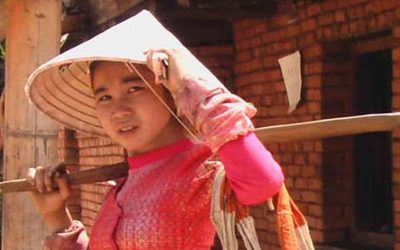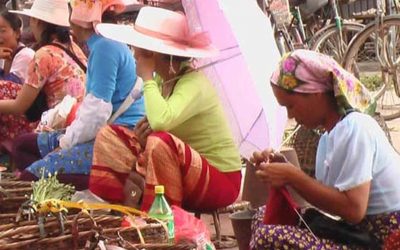Mao Dun’s Spring Silkworms-A must read
In short: A set of stories of exacerbated realism by one of the finest pens of 20th century Chinese literature, which no one should miss in order to understand both the literature and the life and history of contemporary China.
After my disappointment in recent days with Mao Dun’s «Midnight», I have reread the short stories and novellas collected under the title «Spring Silkworms and other stories». I had already read the book 20 or 25 years ago, and when I took it in my hands again I knew that I was facing some hard stories in which the suffering of his characters is described with an almost mathematical precision, the causes of the same are chained in a concatenation of events and policies that only result in ruin, disaster, hunger, suffering.
The corrupt policies of the Kuomintang government, the Japanese invasion, usurious loans, with monthly interest, taxes, political and natural calamities, all play against the common people, always the losers. And although Mao Dun almost always leaves the reader on the brink of the disaster, when it already seems inevitable, and strives to make the protagonists of his stories the families or characters who are not the ones who are suffering the most from historical and political circumstances that condemn millions of people to hunger and misfortune, the reader ends each of the stories with a heavy heart.
Each of these stories is a masterpiece. The descriptions of family decadences encompass a broad geographical, economic, labor and social spectrum, as if the author in writing them and the publisher in putting them together in this volume wanted to show a reality of Leo Tolstoy’s phrase: «All families are alike in happiness, each is different in its misfortune.»
And one of the fascinating aspects of the work is that it shows how misfortune affects anyone, changing their life prospects overnight, sometimes in the midst of disbelief, like Mr. Li from «Wartime,» or Miss Lin from «The Lin Family Store.» As if the first blows of a fortune that is going to become increasingly adverse will be met with the disbelief of those who live their normal lives.
Precisely these two stories, along with those that tell us about the atmosphere in the village of Old Tong Bao, shaken first by the falling prices of silk cocoons and then of rice, are the most elaborate. And while the first two tell us about a misfortune that we could call conjunctural, a war in «Times of War» or a complex political and economic moment in «The Lin Family Store», the second ones tell us about a system that cannot be maintained any longer, as it leaves the peasants continually on the edge of the abyss of misery.
In short, we find ourselves with a set of stories that no one should miss to understand both literature and the life and history of the first half of the twentieth century in China.
Mao Dun. Spring Silkworms and other stories. Translated by Sydney Shapiro. Foreign Language Press. Beijing. 1979.
Cite this article as: Ceinos-Arcones, Pedro, «The first description of the Religion of the Yi,» in Ethnic China, 21 marzo 2021, https://ethnic-china.com/the-first-description-of-the-religion-of-the-yi/.
Last posts
The wonderful culture of the Jinuo
Hidden in the tropical mountains of China’s southern border lives one of its most interesting minorities: The Jino nationality. With a population of only 21,000 people they are one of the less known ethnic groups in China, who in the past were often confused with the...
Introducing the Dong nationality
The Dong are one of the minorities of China with a large population. According to the census of the year 2000 their population was 3,000,000 people. They live mainly in Guizhou Province (approximately 1,800,000 people), along a fringe of flat lands that cross the...
The Dai of Dehong Prefecture
Santasombat, Yos. Lak Chang: A Reconstruction of Tai Identity in Daikong. Canberra, AUS: Pandanus Books, 2001. p 1. (Introduction) The Tai ethnic group, in its different branches, is beyond any doubt one of the most widespread of any ethnic group in the Southeast...
The sacred forests of the Dai
The sacred forests of the Dai: Protecting the ancestors - protecting nature. Among the indigenous peoples that inhabit the south of China, there are a good number that have near their villages a small grove that they consider sacred. Usually they believe that this...








